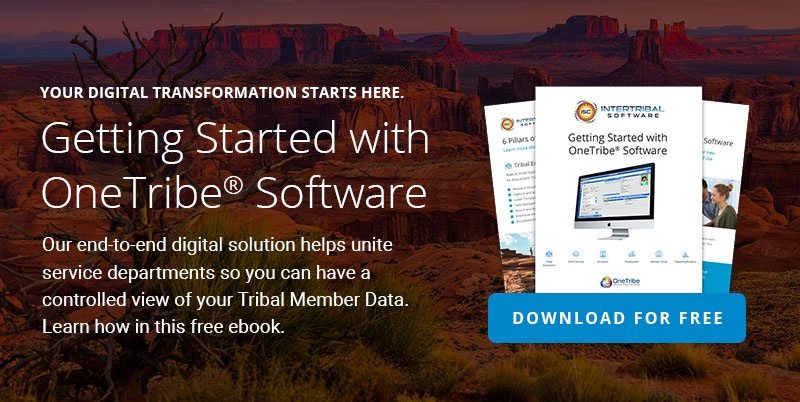
Although change often proves beneficial to organizations and tribal governments, it can be one of the biggest challenges for employees. This is especially true when facing new technology and processes. Resistance to change can happen for various reasons – whether it’s fear of their job becoming obsolete or worry about the learning curve of new technology.
Anticipating this and creating a strategy around change management before new software or changes are implemented is key to maintaining your tribal organization.
Understanding Why Employees Fight Change
Often employees feel uneasy about change because they don’t know where they fit into the “after” part of a tech implementation or switch. If they’ve been doing the same job for a certain amount of time, disrupting that is almost sure to create mixed and overwhelming feelings.
These other reasons contribute to why employees resist change:
- Fear of their work becoming obsolete
- Fear of the unknown
- A steep learning curve
- Different social interactions
- Misunderstanding of the project
Too many changes at once can cause extra frustration with employees who may feel at odds or worried about what will happen. Chances are, a long-time team member will worry about where they’ll fit after a new technology or process gets introduced. To help your employees be more amenable to change, count on the discomfort happening ahead of time so you can plan accordingly.
Developing an Effective Change Management Strategy
Plan in Phases
Map out your new technology change timeline with your technology vendor detailing your recent change before talking to employees. That way, you can answer any initial questions. Reporting a change in person allows you to reassure or quell any initial resistance and provide time to absorb the new information and become more open to the tech itself.
Communicate Updates Often (Even After Implementation!)
Give regular updates after the initial announcement. Based on the implementation schedule, you can do this weekly, bi-weekly, or monthly. This eliminates any fear of the unknown regarding where employees feel they stand or how they need to participate. You’ll also want to continue these notifications after the technology is used to help drive adoption.
Get Employee Feedback
According to Gartner, shifting implementation planning to employees can boost the probability of success by 12%. This is because you’re most likely adopting new technology to drive efficiency and help employees accomplish more. By understanding what employees struggle with and giving them ownership on planning, you can feel more invested in the project’s success. Having everyone’s alignment is essential to long-term adoption.
Appoint Technology Ambassadors
It’s easier to adjust to new technology when you have the support of others. If there’s a team member who’s enthusiastic about the benefits of the change, help get them up to speed earlier. That way, when it comes time to start using the technology, they can be an additional source of support for other employees: the more people who champion the change, the more positive associations around the change.
Celebrate All Your Wins Throughout the Project
A new software implementation can be challenging, especially if you’re going from mostly paper-based processes to digital ones. When your team nails a hands-on learning session, for example, take time to say thanks and give recognition for all the hard work everyone’s put in to get to the point they’re at. It will feel like they’re contributing and working toward bettering the tribe itself.
Change Starts With You
Change management seems complicated, but navigating the steps and strategizing are crucial to managing resistance with the proper plan in place. Being a leader means taking ownership of what’s to come and approaching every day with a sense of optimism. Your team will be sure to follow.
If you’re interested in how we’ve helped other tribal governments manage change to technology and digital processes, feel free to contact us.
Sign Up For Our Newsletter
Recent Posts
- Innovations in Housing: Revolutionizing Tribal Housing with Digital Tools for Management
- Empowering Tribal ICW Departments: Achieve ICWA Compliance and Certification Success with OneTribe® Software
- OneTribe CCA - Your Child Care Data Tracker Replacement Solution
- Transform Your Tribal Member Services With Integrated Software Solutions
- Intertribal Software Raises Strategic Investment
Categories
- OneTribe Software
- digital transformation
- tribal government software
- Laserfiche ECM
- Intertribal Software Consultants
- Childcare Assistance
- Housing Management
- Intertribal Software
- tribal member management
- AFCARS Data Collection
- Child Care Data Tracker
- Child Welfare
- Housing
- ICWA
- ICWA Compliance
- Indian Child Welfare Act
- OneTribe Platform
- Title IV-E Certification
- Tribal Data Tracker
- Tribal Family Services
- Tribal Housing
- Tribal ICWA Software

















